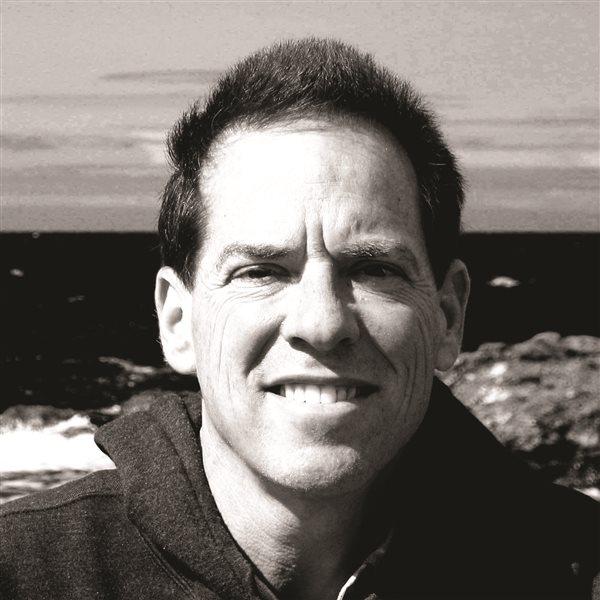The least I could do ...
Believe it or not, hurricanes do visit Arizona--or at least their remnants sometimes do, from the gulfs of Mexico and California. We welcome their wanderings in hopes of rare desert rains. But the hurricane that introduced Jessie and me struck Arizona in a very different manner. Jessie's mother, Holly, works with my wife at a company that distributes medications to chronically ill patients. Jean runs the Scottsdale clinical office, while Holly works the New Orleans distribution center.
Displaced from New Orleans to Arizona by Hurricane Katrina, Jessie gets an introduction to flying. |
"I may need to work late next week," Jean had explained when Hurricane Katrina first barreled toward the Gulf Coast. "If the storm closes our New Orleans facility, the emergency plan calls for shifting claims and prescription processing to my Arizona office for a few days."
As it turned out, Katrina demanded more than just a few days. The entire 120-employee New Orleans distribution center was knocked out, so Jean's three-person clinical staff was suddenly faced with upgrading the Scottsdale operation to process hundreds of prescriptions per day. Immediately my wife began working 15-hour shifts, which dragged into weeks of toiling nearly around the clock.
One night Jean came home after I went to bed and left before I arose the next day. "When will this end?" she exclaimed tearfully by phone that morning, "People need their meds, but I don't know how much longer I can do this." To make matters worse, Hurricane Rita forced a planned northern Louisiana replacement facility to evacuate before it could open. No Labor Day weekend for us--three weeks would pass before Jean's first day off, and two more before she returned to anything resembling a normal work schedule. We felt like the hurricanes had clobbered our house.
Of course the New Orleans staff had it much tougher. Even while struggling to save drugs and medical records, they had frantically evacuated their families to locations around the country; it would be weeks before all were accounted for. Jessie and Holly were among the fortunate few whose homes survived hurricane winds and flooding, though their neighborhood suffered plenty.
When Holly joined Jean in Arizona to help stabilize operations, Jessie volunteered to come along. The young woman dutifully assisted by faxing, sorting, copying, and answering phone calls until she could stand being cooped up no longer. "Poor Jessie is going crazy," said Holly over dinner one night. "And there must be something to do in Scottsdale that doesn't cost $100 for shopping." The two laughed.
"Would you like to see Arizona from the air?" I offered. "We could fly to Sedona, one of the most beautiful places anywhere." Holly was too busy, but her daughter accepted immediately.
Jessie said little, however, when we arrived at the airport the next morning, and she politely declined the controls when I invited her to fly. Instead she gazed at the emerald Verde River slicing unfamiliar mountains beneath our wings. Sedona Airport soon appeared on its mesa top amid towering vermillion buttes and cliffs. Still Jessie was quiet, but when we stepped into Sedona's cool mountain air I noted hints of a smile.
"What's this?" she asked of a fruit-laden prickly pear cactus near the airport terminal. "Can you eat it?" I sliced a spiny fruit with my pocketknife so we could sample the fuchsia flesh. "It's sweet!" she said, spitting seeds through a grin. We hiked to a scenic overlook above town, then down the mesa side to surmount a mini-mountain near the bottom. Katrina's burden evaporated gradually from Jessie's face as we labored up rocky slopes in the thin 5,000-foot air. Reaching the top, we stretched out to savor cool water and red-rock vistas.
It was then that Jessie told of escaping the hurricane, and how with looters threatening town her family had appreciated the arrival of armed troops. "I never thought I'd miss high school," she said after fielding a cell phone call from her choir teacher, "but after a month off I can't wait to see my friends. It'll be strange, though. No one knows where some of the kids are. Many won't be back, and new ones will come from schools that were destroyed. To make up for missed classes we'll go an extra hour each day. Christmas break has been reduced to one week, and spring break to two days."
We hiked back up the mesa, snapping photos along the way, and lingered lazily over lunch on the airport restaurant patio. Jessie insisted on paying. "Would your mother mind if I buy lunch?" I asked, remembering Holly's $100 shopping remark.
"She sure would," came the reply, so I acquiesced.
Jessie took more active interest on the flight home. This time she accepted the controls and guided the Flying Carpet like a pro toward the McDowell Mountains marking Phoenix. Somehow this aerial vantage offered me a broader perspective of hurricanes and their survivors. I'd been touched firsthand by the travails of New Orleanians. Who among us hasn't been affected? My own wife's month of heroism in delivering medications to needy patients will surely prove a highlight of her pharmacy career.
As for taking Jessie flying, the impact wouldn't be clear until later. "Jessie will never forget that flight," Jean declared after work. "It's nice that you could give her a happy memory to temper the traumatic ones." More convincing were Holly's words a few days later: "Jesse framed the photos from your flight, so it was clearly very special to her. If only I could have joined you."
"It was the least I could do, Holly," I replied, "and next time is your turn."
Greg Brown was the 2000 National Flight Instructor of the Year. His books include Flying Carpet, The Savvy Flight Instructor, The Turbine Pilot's Flight Manual, Job Hunting for Pilots, and You Can Fly! Visit his Web site.



